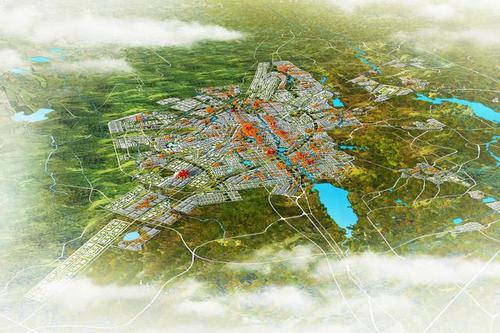备份栏目
Land and space planning “multi-regulation integration” will accelerate the realization
With the advancement of “multi-trial integration, multi-certificate integration” and the reform of the land space planning review and approval system, China ’s “multi-regulation integration” of land space planning will be accelerated.
Long Zhao, deputy minister of the Ministry of Natural Resources, said at the State Council's launch conference on the 20th that this round of institutional reforms has integrated the main functional area planning, land use planning, urban and rural planning, etc. into a unified land and space plan to achieve multi-regulation integration . According to relevant deployments, two reforms have been concentrated in the area of territorial space planning. The first is to reform planning permits and land use approvals, and to promote multi-review and one-certificate integration, which is mainly aimed at enterprises and the masses to optimize the business environment. Through this reform, approval items will be greatly consolidated and streamlined, reporting materials will be greatly reduced, and approval time will be significantly reduced, which will help further improve the efficiency of government services, optimize the business environment, reduce institutional transaction costs, and facilitate investment. Landing.
The second is to reform the system of review and approval of territorial space planning. Before the institutional reform, there were more than 100 cities reporting to the State Council for approval of the overall land use plan and the urban master plan. In the future, except for municipalities, cities with separate plans, provincial capitals, and cities designated by the State Council, the plans will be reviewed and approved by the State Council, and other cities will be examined and approved by provincial governments. The national level is mainly responsible for reviewing the content that the country needs to control, such as the delineation and implementation of control lines such as the ecological protection red line, permanent basic farmland, and urban development boundaries; and the natural history and culture protection system; Major controlling indicators such as intensity; spatial patterns and neighboring relationships between cities and regions. Through the reform, the approval time will be shortened from the past three years or even longer to about half a year.
Guohong Liu, director of the Land and Space Planning Bureau of the Ministry of Natural Resources, pointed out that through the reform of the land space planning review and approval system, the approval time will be reduced from the past three years or even longer to about half a year. However, the decentralization of examination and approval power is not the same as letting go, but relying on institutional construction to build a top-down normative system. Especially in the construction of basic rule of law, it is planned and controlled according to law. Legislation related to the Land and Space Planning Law is steadily advancing under the unified organization of the National People's Congress. Measures for planning and approval at all levels have been initially formed, and technical standards and specifications will be released one after another. In the future, it is necessary to give full play to the role of the basic information platform of land and space, conduct common communication from top to bottom, and build an entire regulatory system. It is necessary to use big data, remote sensing monitoring, and a picture of national land and space planning, to vertically implement national top-down control and transmission, and to achieve horizontal connection between the overall land and space planning and special planning.

Original link: http://www.xinhuanet.com/expo/2019-09/23/c_1210289111.htm

